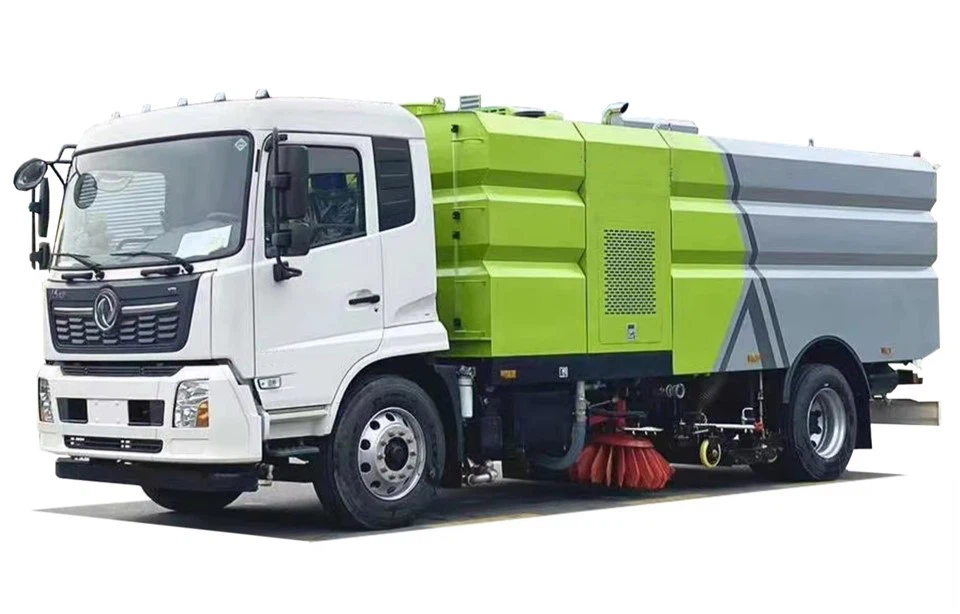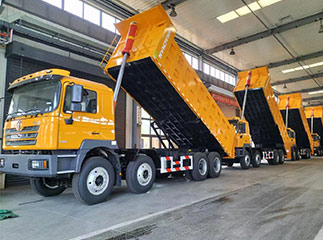Everything You Need to Know About Truck Cabs

Introduction
Truck cabs are the crucial component of any truck, serving as the driver’s workspace and living space while on the road. They come in various styles and configurations, catering to different needs and preferences. This article will delve deep into the world of truck cabs, exploring their types, features, benefits, and much more to assist both seasoned drivers and newcomers in the trucking industry.
1. Understanding Truck Cabs
1.1 What is a Truck Cab?
A truck cab is the front part of a truck that houses the driver and passengers. It is designed to provide comfort, safety, and control over the vehicle. The cab includes essential elements such as seats, controls, and sometimes sleeping areas for long-haul drivers.
1.2 The Importance of Truck Cabs
The truck cab is more than just a compartment; it plays a vital role in the efficiency and comfort of the driver. A well-designed cab can significantly reduce driver fatigue, enhance safety, and improve overall driving experience.
2. Types of Truck Cabs
2.1 Standard Cabs
Standard cabs are the basic design, accommodating a driver and one passenger. They are often preferred for shorter trips and city driving.
2.2 Extended Cabs
Extended cabs offer extra space behind the driver and passenger seats, providing room for additional passengers or cargo. These are suitable for more versatile use, especially for families or teams.
2.3 Crew Cabs
Crew cabs are larger, with four doors and ample passenger seating. They are ideal for work crews who need to travel together, making them popular in the construction and landscaping industries.
2.4 Sleeper Cabs
Sleeper cabs feature a designated sleeping area, complete with a bed, storage, and sometimes even a small kitchen. They are designed for long-haul drivers who spend nights on the road.
3. Key Features of Truck Cabs
3.1 Comfort and Ergonomics
The interior design of a truck cab prioritizes comfort and ergonomics to ensure the driver remains focused and alert. Features may include adjustable seats, ample legroom, and well-placed controls.
3.2 Safety Features
Modern truck cabs include a range of safety features such as airbags, anti-lock brakes, and electronic stability control. These features are critical for protecting the driver and passengers in case of an accident.
3.3 Technology Integration
Today’s truck cabs are often equipped with advanced technology, such as GPS navigation, Bluetooth connectivity, and integrated entertainment systems. These technologies help drivers stay connected and navigate efficiently.
3.4 Storage Solutions
Effective storage solutions in truck cabs include compartments, under-seat storage, and overhead bins. These features help keep the cab organized, enhancing the overall driving experience.
4. Buying a Truck Cab: What to Consider
4.1 Purpose of Use
Identifying the primary purpose for the truck is crucial. Whether it’s for personal use, commercial hauling, or construction, knowing your needs will guide your purchasing decision effectively.
4.2 Budget
Establishing a budget is essential. Truck cabs vary significantly in price based on size, features, and brand. Make sure to balance cost with the necessary features for your use case.
4.3 Fuel Efficiency
Fuel efficiency is crucial for long-term operational costs. Consider models with better mileage, especially for long hauls to reduce expenses on fuel.
4.4 Resale Value
The resale value of a truck cab should also be a consideration. Some brands and models retain value better than others, so consider future selling potential when buying.
5. Maintenance Tips for Truck Cabs
5.1 Regular Cleaning

Keep your truck cab clean both inside and out. Regular cleaning not only maintains aesthetics but also preserves the materials and components of the cab.
5.2 Routine Inspections
Perform routine inspections of the cab and its features, including lights, brakes, and safety systems. Early detection of problems can save time and money in the long run.
5.3 Addressing Wear and Tear
Due to their usage, truck cabs are susceptible to wear and tear. Address issues like upholstery damage, mechanical failures, and electronic malfunctions promptly to keep the cab functional and comfortable.
6. Truck Cabs in the Future: Trends and Innovations
6.1 Electric and Hybrid Truck Cabs
The trucking industry is gradually shifting toward electric and hybrid models. These innovations aim to reduce emissions and fuel costs while providing modern cab features.
6.2 Automation and Self-Driving Technology
With advancements in technology, semi-autonomous and fully autonomous trucks are being developed. Future truck cabs might integrate AI and machine learning to enhance safety and efficiency.
6.3 Enhanced Connectivity

As the Internet of Things (IoT) continues to evolve, we can expect truck cabs to feature improved connectivity with smart devices and digital navigation tools, making the driving experience smoother and more efficient.
7. Practical Examples of Popular Truck Cab Models
| Truck Model | Cab Type | Key Features |
|---|---|---|
| Ford F-150 | Standard/Crew | Comfortable seating, advanced safety features |
| Chevrolet Silverado | Extended/Crew | Spacious interior, high towing capacity |
| Ram 1500 | Standard/Crew | Luxury finishes, user-friendly technology |
| Freightliner Cascadia | Sleeper | Fuel-efficient, spacious sleeper area |
| Peterbilt 579 | Sleeper | Modern design, advanced aerodynamics |
8. Frequently Asked Questions (FAQs)
8.1 What is the difference between a standard cab and a crew cab?
A standard cab typically has two doors and seats up to three people, while a crew cab has four doors and can seat five or more, providing extra space for passengers.
8.2 How can I improve the comfort of my truck cab?
You can enhance comfort by investing in ergonomic seat covers, adding a quality steering wheel cover, and ensuring proper climate control through air conditioning and heating.
8.3 What should I look for in sleeper cabs?
When choosing a sleeper cab, look for adequate sleeping space, storage options, and additional features such as a mini-fridge and microwave, which can enhance long-haul comfort.
8.4 Are there accessories that can improve my truck cab experience?
Yes, various accessories can improve your experience, including GPS devices, backup cameras, dashboard organizers, and comfort-enhancing seat cushions.
8.5 How often should routine maintenance be performed on truck cabs?
Routine maintenance should generally be performed every 5,000 to 7,000 miles, but always refer to your truck’s manual for specific recommendations based on your model.

8.6 What are the average costs associated with maintaining a truck cab?
The costs can vary significantly based on the model and its specific maintenance needs, but budgeting around $200 to $500 annually for general upkeep is a good starting point.
